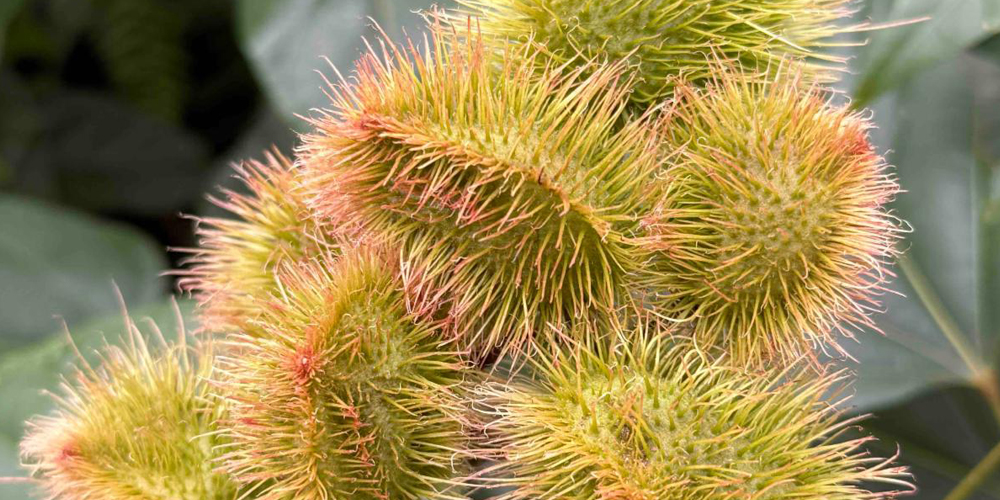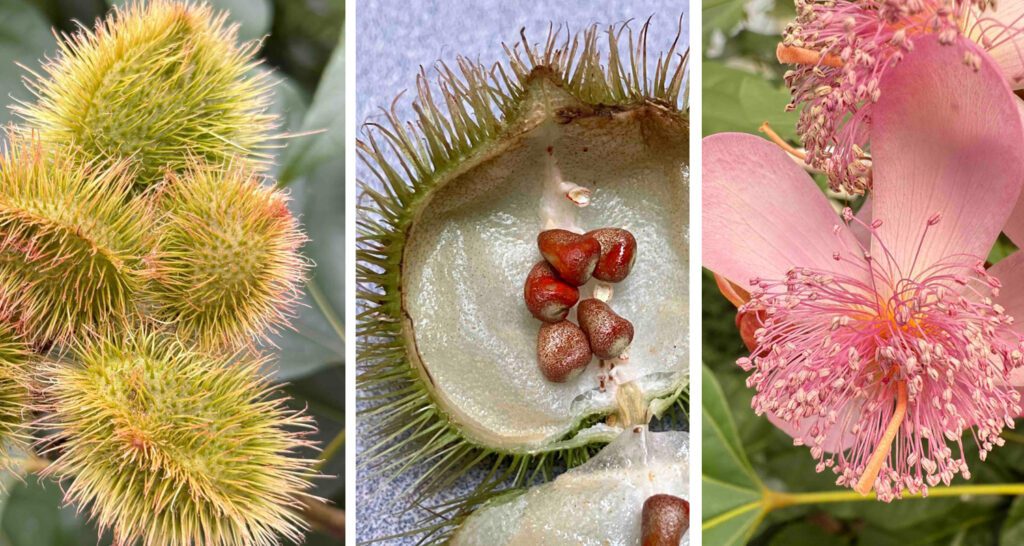
An Ethnobotanical Gem
Garden Director Lew Feldman
As you enter the Virginia Haldan Tropical House, just to your right, is a large, bushy plant bearing spiny fruits with an outer wall reminiscent of a chestnut. These are the fruits of Bixa orellana.
Bixa orellana, colloquially known as the lipstick tree, is a small shrub or tree native to northern South America and Central America. The plant is the source of many products commonly used by humans for condiments or dyes, including annatto. Annatto is made up of several orange-red pigments/dyes obtained from a structure, the aril, which surrounds individual seeds.

Reproductive structures of Bixa orellana.
Left: fruits; Middle: opened fruits showing seeds surrounded by the red dye-containing arils; Right: flower.
Indigenous peoples traditionally used annatto in ceremonial occasions for body paint. The name lipstick tree derives from the use of the annatto dye as a cosmetic to paint one’s lips. The combination of pigments in the dye includes bixin (the red pigment) and norbixin (the yellow pigment). Annatto pigments are one of the most widely used natural, non-toxic commercial dyes and are employed in coloring cosmetics such as nail polish and soap. These pigments also have wide application in the food industry where they are used in many dairy products such as ice cream and in coloring butter, margarine and cheeses.
In some cultures, Bixa seeds are not only used to color foods, but also as a condiment. When heated in oil the seeds release compounds which impart a “subtle flavor and aroma” to foods, said to be like paprika. Ground annatto, often mixed with other spices, is used to flavor many traditional dishes, from Latin America to the Philippines.
The plant produces beautiful but short-lived flowers that typically bloom late summer into fall. Any time of year this is an interesting plant to view in the Virginia Haldan Tropical House at the Garden!